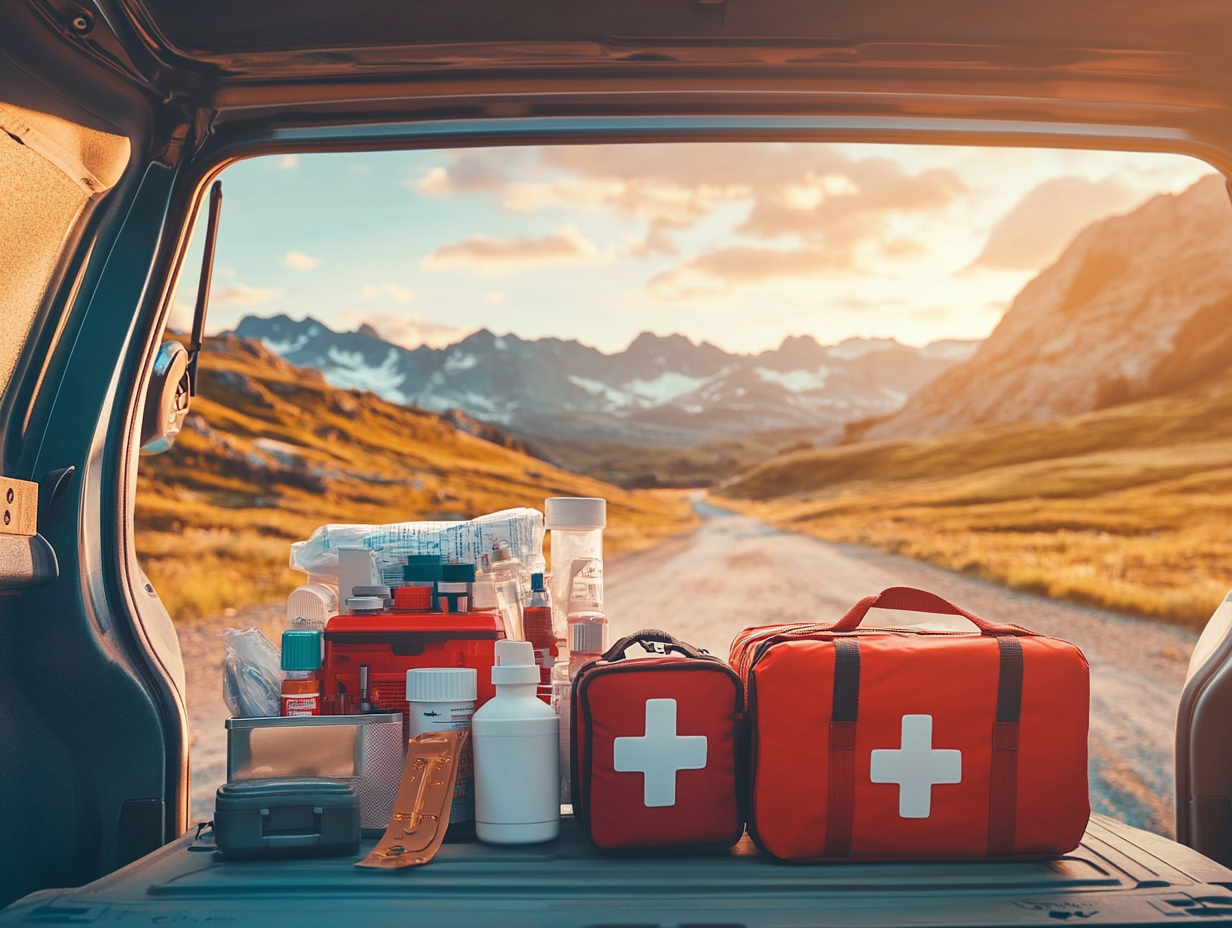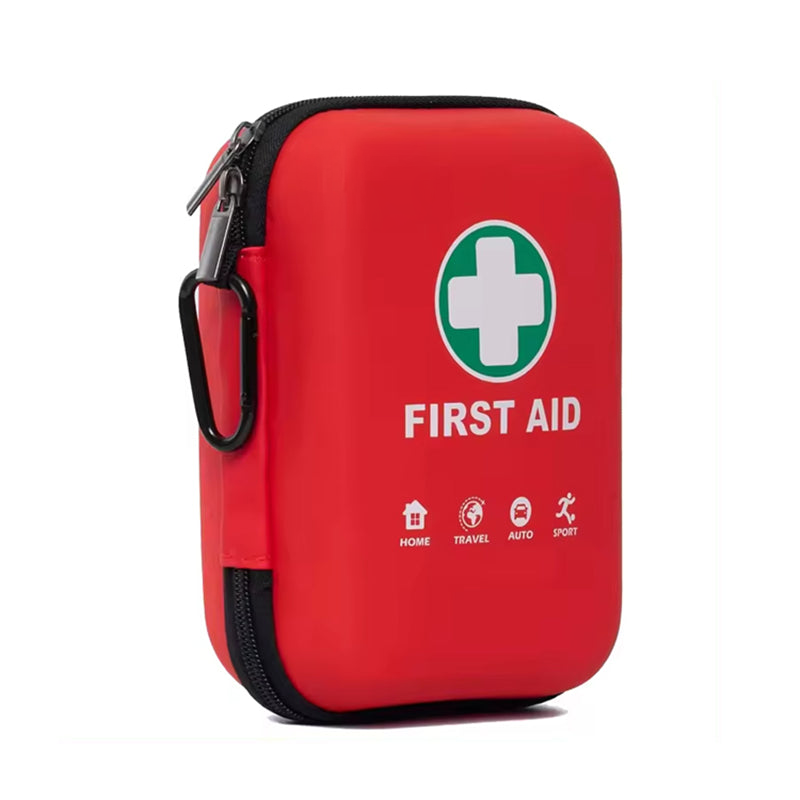Car First Aid Kit and Weather Factors

Introduction: How Does a Car First Aid Kit Tackle Emergencies Across Various Weather Conditions?
Whether you commute daily or embark on long road trips, weather remains an unpredictable factor we cannot fully control. Snowy winters, blazing summers, and the ever-changing springs and autumns influence not only driving safety but also trigger sudden health concerns.
A well-equipped car first aid kit often serves as a "lifesaver" during critical moments. However, this kit does not function as a universal "magic box." You must adapt its contents and usage to weather shifts to address emergencies in diverse environments effectively.
This article explores how a car first aid kit performs in different weather conditions, offering detailed emergency strategies and configuration tips to help you manage unexpected situations calmly and ensure safety.
Seasonal Injuries and Emergencies: Common Problems and Solutions Across Weather Conditions
Weather shifts spark specific seasonal injuries. To ensure driving safety, understand these issues’ causes, master emergency responses, and stock your car first aid kit with appropriate supplies. Let’s break this down by season.
1. Frostbite in Cold Winter Weather
What Causes Frostbite?
In frigid winters—especially in northern or high-altitude regions—temperatures often drop below zero. If your vehicle breaks down or you wait for rescue outdoors, prolonged exposure to cold slows blood circulation, risking frostbite on exposed areas like fingers, toes, ears, and noses. Without prompt action, frostbite progresses from redness and tingling to blisters or even tissue death.
How to Respond
- Warm Up Immediately: Move the frostbitten person into the car or a warm space to shield them from further cold. If escape isn’t possible, warm the affected area with other body parts (like armpits) temporarily.
- Soak in Warm Water: Submerge the frostbitten spot in 37-42°C water for 15-30 minutes to restore circulation. Keep the water mild to avoid burns, and steer clear of direct fire or heat sources.
- Protect the Wound: If blisters or skin breaks appear, avoid popping them. Clean the area with a disinfectant cotton ball and wrap it gently with clean gauze to prevent infection.
- Monitor Symptoms: If frostbite worsens (e.g., skin blackens or loses feeling), seek medical help immediately.
What to Pack in Your Car First Aid Kit
- Thermal Blanket: A lightweight aluminum foil blanket retains body heat effectively.
- Warm Water Bag: Fill it with warm water ahead of time for frostbite treatment.
- Clean Gauze and Bandages: Use these to dress frostbite wounds.
- Gloves and Wool Hat: Keep spares to guard against further frostbite.
- Heat Packs: Add these for extra localized warmth.
2. Heatstroke in Hot Summer Weather
What Causes Heatstroke?
In scorching summers, a broken air conditioner or long sun exposure can push car interior temperatures above 40°C. High heat and humidity overwhelm the body’s ability to cool itself, causing heatstroke as temperature regulation fails. Symptoms range from dizziness and nausea to coma or life-threatening states.
How to Respond
- Cool Down Quickly: Shift the person to a shaded, airy spot, loosen tight clothes, and wipe their forehead, neck, and limbs with a wet towel or spray cool water.
- Rehydrate: Offer sips of cool boiled water or electrolyte-rich sports drinks. Avoid large gulps or icy water to prevent stomach upset.
- Promote Rest: Have them lie flat with legs raised about 30 degrees to boost circulation. If symptoms persist, call emergency services right away.
- Prevent It: When parking in heat, never leave people inside the car. Use sunshades to lower interior temperatures if needed.
What to Pack in Your Car First Aid Kit
- Cooling Patches: Stick these on the forehead or neck to drop body temperature fast.
- Electrolyte Drinks: Stock sports drinks or homemade saline to restore electrolytes.
- Wet Towels or Spray Bottles: Use these to wipe or mist the body for cooling.
- Sun Umbrella or Hat: Shield against sun exposure during outdoor waits.
- Portable Fan: A battery-powered fan boosts airflow.
3. Variable Spring and Autumn Weather and Allergic Reactions
What Causes Allergic Reactions?
Spring and autumn bring sharp temperature swings and spikes in allergens like pollen and dust mites, triggering allergic rhinitis, asthma, or itchy skin. For passengers with asthma or allergy histories, the car’s enclosed space can intensify these reactions.
How to Respond
- Use Antihistamines: Take prescribed antihistamines (like loratadine or cetirizine) to ease sneezing and runny noses.
- Deploy Inhalers: Asthma sufferers should carry quick-relief inhalers (e.g., albuterol) and use them as instructed.
- Ventilate: Open windows or switch to external air circulation to clear allergens from the car.
- Clean the Skin: For allergic rashes, rinse with water and apply anti-allergy ointment.
What to Pack in Your Car First Aid Kit
- Antihistamines: Tailor the stock to personal needs.
- Inhalers: Vital for asthma patients—check expiration dates often.
- Anti-Allergy Ointment: Use hydrocortisone cream for skin flare-ups.
- Masks: Filter pollen and dust to cut allergen inhalation.
Tailoring Your First Aid Kit: Adapting the Contents to Weather Changes
Your car first aid kit’s setup shouldn’t stay static. Adjust it to match seasonal and weather patterns. Here’s how to optimize it:
Winter Tweaks
- Boost Warmth: Add thermal blankets, gloves, wool hats, and heat packs to maintain body heat.
- Pack Warm Water Bags: Use these for frostbite care.
- Include Anti-Slip Chains or Snow Shovels: These enhance safety on snowy roads, though not core first aid items.
- Stock Hot Drink Packs: Instant coffee or ginger tea warms you from within.
Summer Tweaks
- Enhance Cooling: Include cooling patches, wet towels, and spray bottles for heatstroke relief.
- Add Electrolyte Drinks: Keep 2-3 bottles to combat dehydration.
- Pack Sunscreen and Sun Hats: Protect skin from UV rays.
- Bring Cooling Oil: Ease mild dizziness or heat discomfort.
Spring and Autumn Tweaks
- Stock Antihistamines and Inhalers: Customize based on health needs.
- Add Rain Gear: Folding umbrellas or disposable raincoats handle sudden showers.
- Include Spare Towels: Wipe off rain or sweat for comfort.
Year-Round Must-Haves
No matter the season, always carry these essentials:
- Adhesive Bandages, Gauze, Bandages, Disinfectant Cotton Balls: Treat minor cuts and scrapes.
- Pain Relievers (e.g., Ibuprofen), Fever Reducers (e.g., Acetaminophen): Ease common discomforts.
- Medical Tape, Scissors, Tweezers: Simplify first aid tasks.
- First Aid Manual: Offers quick guidance, especially for novices.
Summary: Ensuring Your Car First Aid Kit Handles Emergencies Effectively in Any Weather
The car first aid kit doubles as a safety “talisman” and a “lifeline” for extreme weather crises. By tweaking its contents to suit weather shifts, you can swiftly address emergencies like frostbite, heatstroke, or allergies, reducing harm. Here’s how to make it work:
-
Check and Update Regularly
Inspect your kit monthly to confirm all items remain intact, medications and drinks stay in date, and supplies get restocked. Adjust it during seasonal changes to match weather needs. -
Learn Basic First Aid
Car owners and passengers should master skills like CPR, bleeding control, and bandaging. Take community or online courses to sharpen self-rescue and mutual aid abilities. -
Stay Calm and Systematic
Emergencies spark panic, but cool-headed judgment and orderly steps ensure successful first aid. Consult the manual or recall procedures to act deliberately. -
Call Professionals Promptly
The kit buys time in crises but doesn’t replace expert care. While managing the situation, dial emergency services (e.g., 911) for further treatment.
With these steps, your car first aid kit delivers dependable protection across weather conditions—warming you in icy chills or cooling you in blazing heat. It becomes a vital travel companion. We urge every car owner to prioritize its preparation and use, making every journey safer and more secure!
